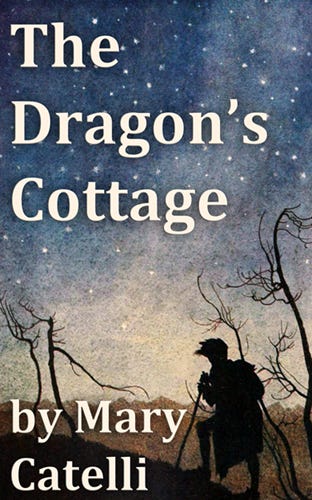Hunting around folklore and fairy tales1 enables you to find, and rip off, any number of fresh, new ideas.
The small problem with them is that people will try to feed them into the folklore they know, or the fantasy they have read and its cliches.
If necessary, they will file off elements that you explicitly put in, in order to fit them into preconceived notions. Then they will blame you for the story not working with those notions.
One beta reader of The Dragon's Cottage2 refused to believe that dragons could be human-sized.
That's the size they are in Eastern European fairy tales: small enough to ride horses (The Nine Peahens and the Golden Apples), dance with humans (The Flower Queen's Daughter), and even be tricked by the claim the hero is the same size as the dragon (How the Dragon Was Tricked).
They work, in fact, more like ogres than the dragons you remember from high fantasy. All of the cited tales have variants with ogres or the like.
Indeed, the translator of Georgios A. Megas's Folktales of Greece just left the word untranslated as drakos, because on one hand, they did act more like ogres, and on the other hand, the word actually did mean dragon.
Nor is it unknown in art. In medieval depictions of Saint George and the Dragon, he often towers over the dragon. (Lending some credence to the notion it was originally a crocodile.)
Or goblins. Goblins were frequently a kind of household fae. Especially a hobgoblin, which is a composite of a goblin and a hob, which was definitely a household fae. One Hans Christian Anderson story with a clear brownie type fae was translated The Grocer and the Goblin, and while we may suspect the artful hand of alliteration guided the choice of the translator, it was clearly a reasonable choice in the day.
Nowadays, fantasy has left its mark. The goblin is at most as small as a kindergartner, generally green, and living in his own home, in his own, goblin village -- and is dangerous in plain battle, not just in vicious pranks if unappreciated or spiteful.
Sometimes, the effect is subtle. One day, I was writing the tale that would become The Maze, The Manor, And The Unicorn.3 It features a unicorn.
Being aware that the trope is less used nowadays, I carefully slithered in the knowledge that the horn of unicorn can cure poison. Starting with the name of the place -- Clearwater -- so that the heroine could reflect on how the unicorn was probably the source of the clarity.
So the beta readers read it, and some found one fault, and some another fault, and one objected to the off-hand comment that a virgin was safe in the woods of the unicorn, but other characters wouldn't be.
I wrestled with it for a time. Finally I ended up sharpening the element of how a virgin can tame a unicorn a bit, but not much. What is insufficient for some readers will be ham-handed overlaboring a subject for another. Your target reading audience can not be everyone in the world.
This is what makes retelling variants so interesting.
If you try to do a variant on Tattercoats, where the heroine's problem is her grandfather refusing to let her go to the ball, and the gooseherd, her friend, persuades her to go to the city where the ball is held so they could watch all the guests arriving in their finery instead of her fairy godmother giving her fancy gowns and a carriage to attend the ball, and she meets the man who turns out to be the prince on the way, while she is still in her tatters -- well, telling it more or less straight can work. (I use it as the part of the backstory of The Princess Seeks Her Fortune4.)
But when you try to put a twist on it, you may get complaints that it took too long to realize that you were retelling Cinderella.
Just one of those things you have to live with.
Available at Amazon, Barnes & Noble, Kobo, Apple Books, Smashwords, and many other fine online venues!
Available at Amazon, Barnes & Noble, Kobo, Apple Books, Smashwords, and many other fine online venue!
Available at Amazon , Barnes & Noble, Kobo, Apple Books, Smashwords, and many other fine online venues!









I do like the picture of the dancing dragons. From Victorian times, I guess by the look?
I also seem to recall that in Eastern European folklore, dragons, well male dragons, were notorious for their desire for human women. Which was supposedly how some legendary and historical heroes from that part of the world were born, from a woman who made love to a dragon.